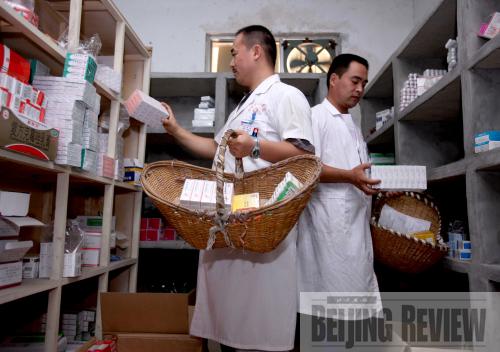|
The government labeled 148,000 villages around the country as high-poverty. "Poverty-stricken villages were a more effective designation than poverty-stricken counties. They reflected the reality of poor populations gathered in villages," said Li.
"However, with extensive studies, we find that the poor are not in fact living in same villages but scattering in zones formed by special reasons, such as an earthquake, flood or drought. Sichuan's Wenchuan Earthquake formed a special poverty-stricken zone," he said. "Hence a household-level targeting mechanism would be more reasonable."
"The poverty line designation is not reasonable either," he said. Due to differences in infrastructure, education and healthcare between different regions, the poverty line will lose its real sense. "In some places, people with income under 1,067 yuan ($156) may not feel poor because they have good education and healthcare benefits," said Li.
He said the new strategy would encourage creating different standards in different regions according to real conditions.
"The most important reform in the new strategy will be giving rights to the poor," said Li. In the last 10 years, government officials and the poor themselves have gained experience fighting against poverty. The poverty alleviation departments of Sichuan, Yunnan, Gansu, Guangxi and Jiangxi have found an effective way to solve the problem by giving rights to the poor.
"Based on that experience, the new strategy will further explore how to empower the poor. Then the Central Government can spread the poverty alleviation method to more poverty-stricken areas and families," he said.
 |
|
BETTER HEALTHCARE: Doctors at the Tangfang Health Center in Gaoqing County, Shandong Province, prepare medicine for farmers. The new healthcare system in rural areas brings convenience to farmers (CHEN JIANLI) |
|
